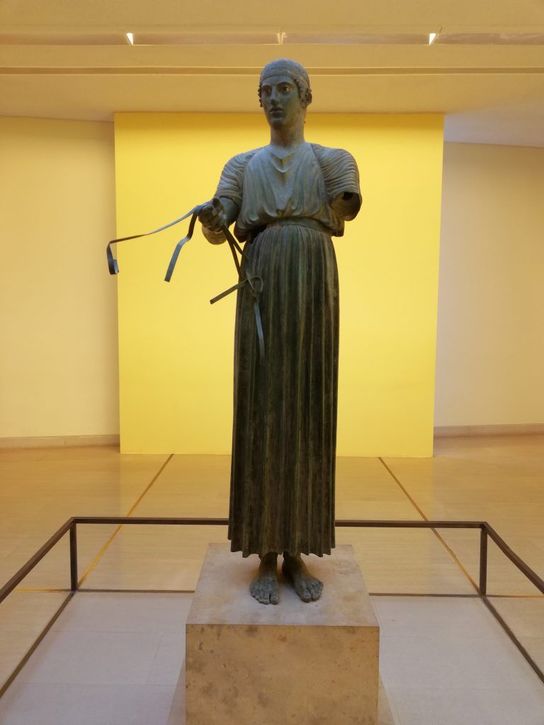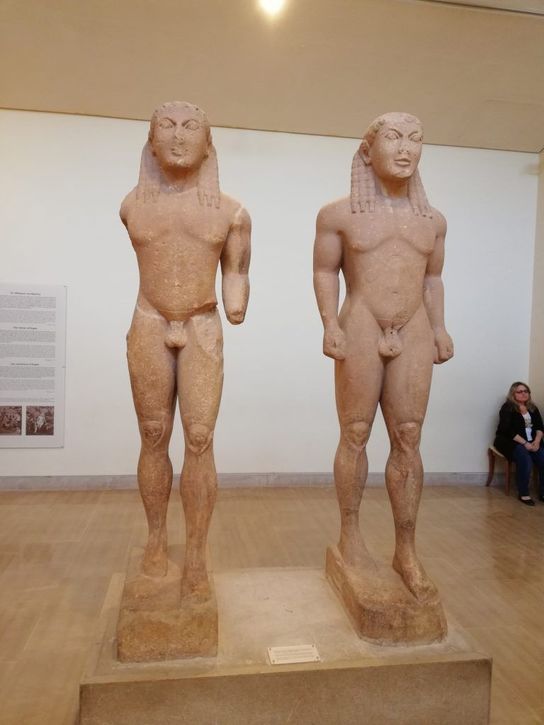Nafpaktos was known by the Venetians, who built a fortress here, as Lepanto. In 1571, the famous naval battle of Lepanto was fought in which the Venetians, Spanish and Genoese defeated the Ottomans. It is claimed that the Spanish author Miguel de Cervantes (author of Don Quixote) lost an arm in the conflict although only his left hand was maimed.
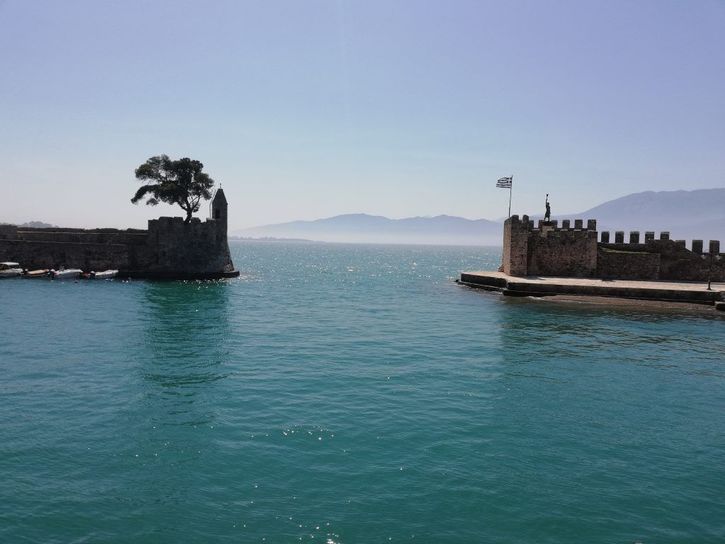
We continued to drive through the spectacular scenery of a part of Greece not overrun with tourists.
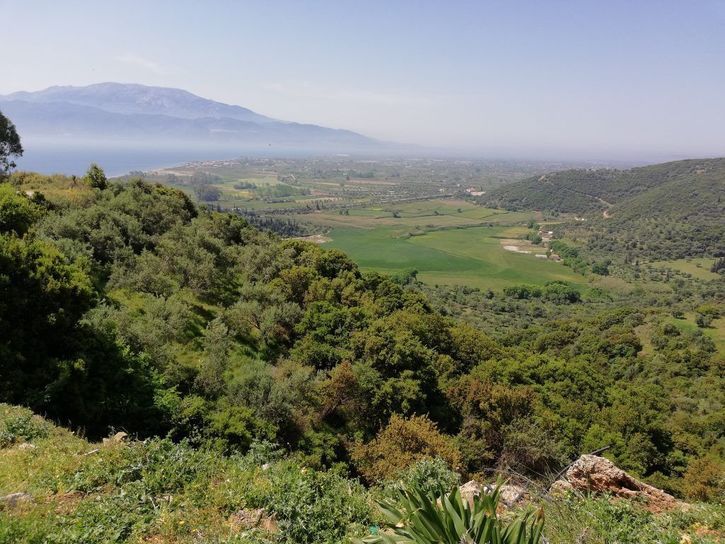
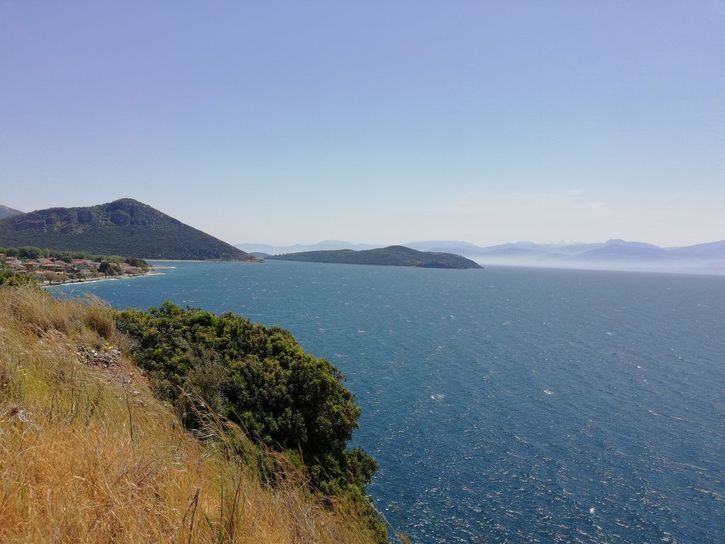
Delphi was created, according to legend, when Zeus released two eagles from opposite ends of the earth and their paths crossed above Delphi, establishing the site as the centre of the earth. The centre was marked by the Omphalus. This sacred object was located in the Adyton of the Temple of Apollo, and was viewed only by the priests and priestess who had access to the chamber. It is a Hellenistic or Roman copy of the original .
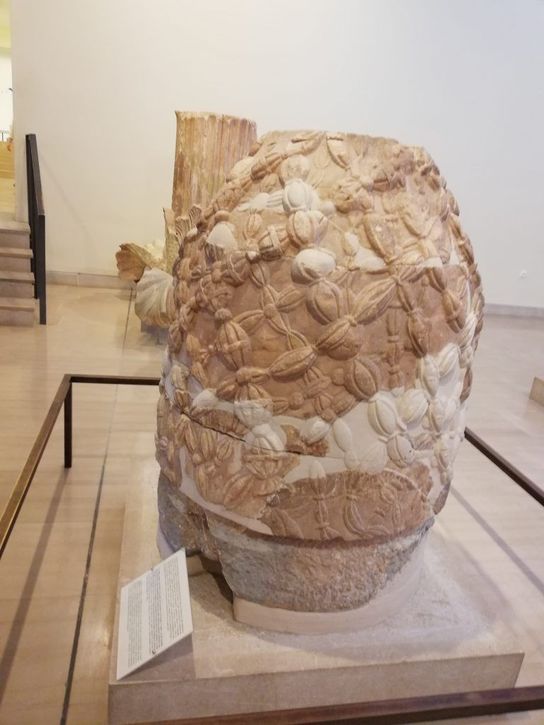
Known as the dwelling place of Apollo from the end of the eighth century BC, travellers from all over the world visited Delphi to consult the God on what action to take. With the political rise of Delphi in the sixth century BC and the reorganisation of the Pythian Games, the sanctuary entered a golden age which lasted until the Romans came in 191 BC. The Oracle was abolished in 393 AD with the Christianisation of the Byzantine Empire under Theodosius.
The Oracle was the means through which the worshippers could hear the words of Apollo spoken through a priestess, or pythia. They paid a levy and sacrificed an animal. The pythia would answer in a trance, perhaps induced by vapours from a crack in the ground over which she sat on a tripod. King Croesus of Lydia (reigned 560-546 BC) came to ask if he should make war against Cyrus the Great of Persia and was told that if he crossed a river then he would destroy a great empire. On marching against Cyrus, his troops crossed the river Halys and he did destroy an empire although it turned out to be his own.
The Sanctuary of Apollo is entered through an agora from which the Sacred Way winds through ruins.
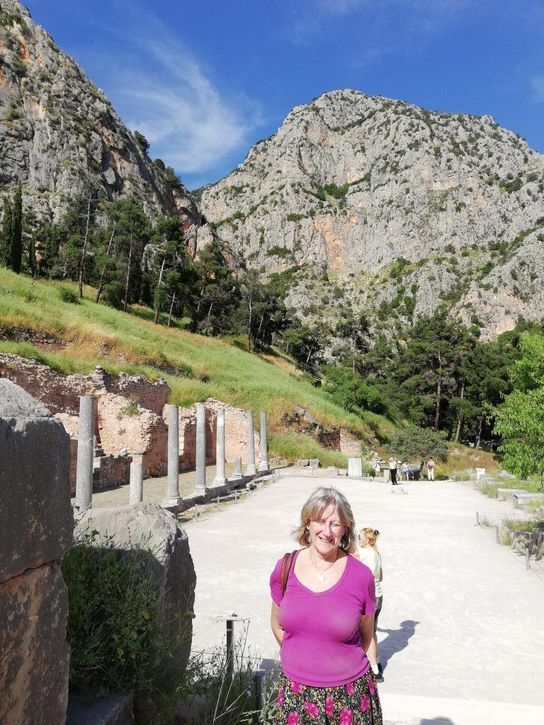
Originally lined with 3,000 statues, it passes the Rock of the Sibyl where Delphi’s first prophetess announced her oracles to the Temple of Apollo, which was built in sixth century BC and the amphitheatre. The Treasury of the Athenians was built to mark the victory at the Battle of Marathon in 470 BC
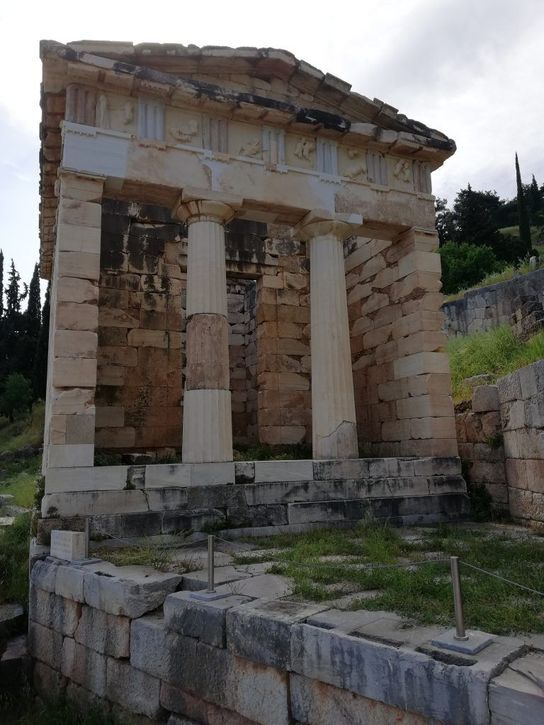
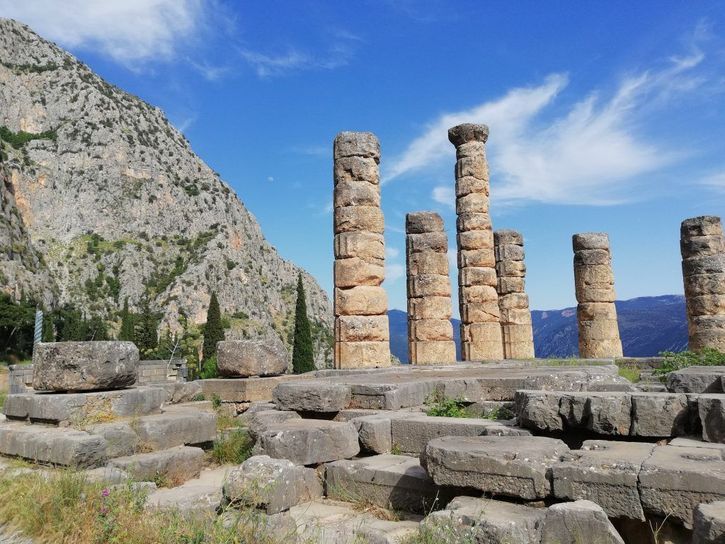
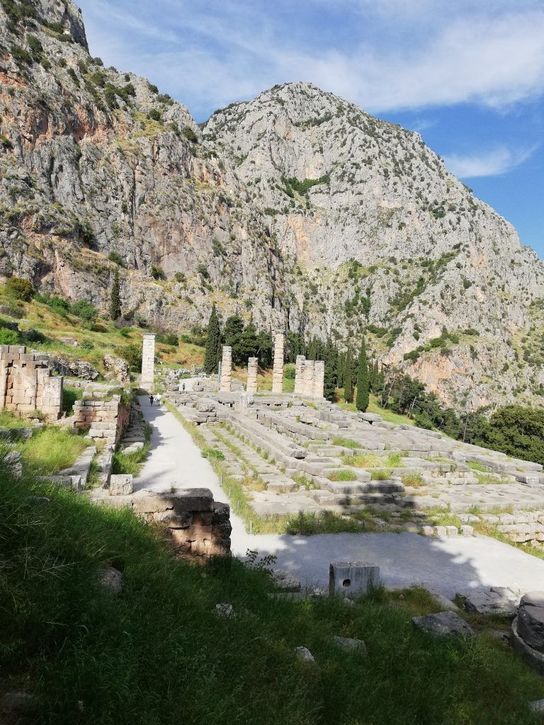
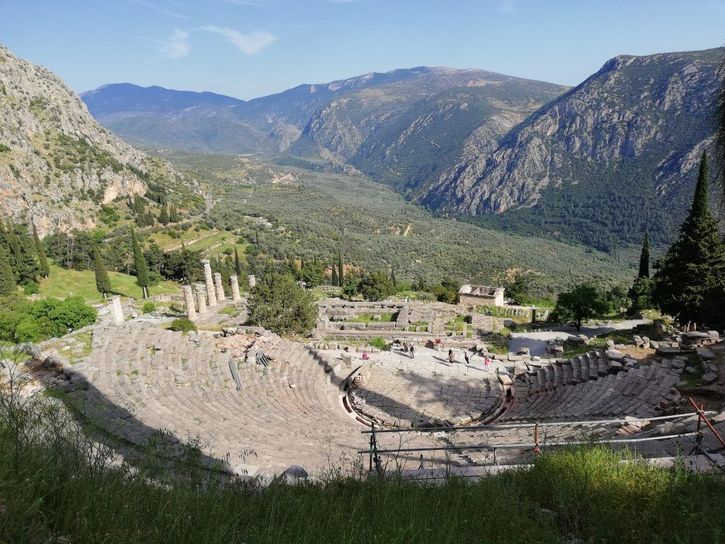
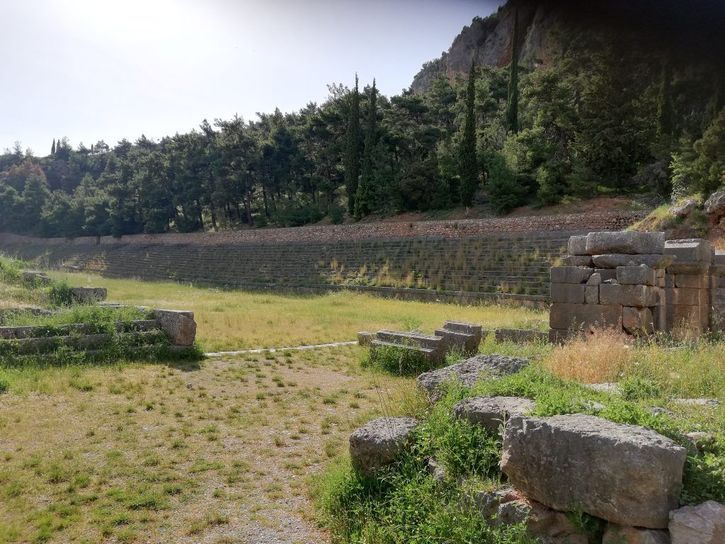
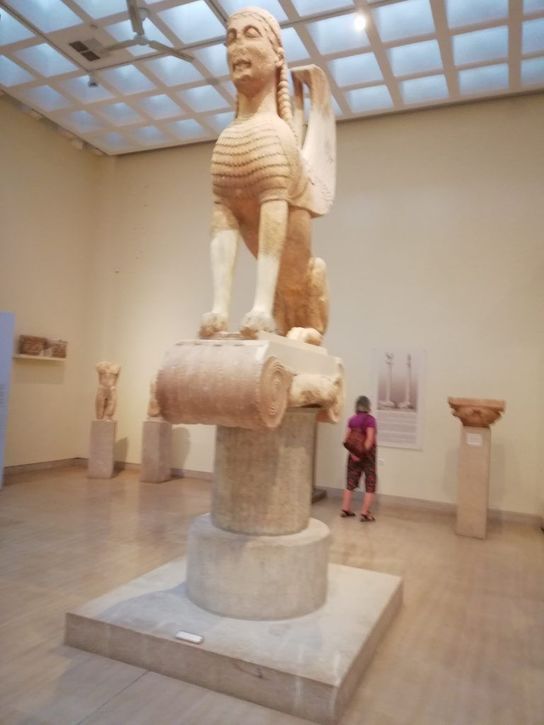
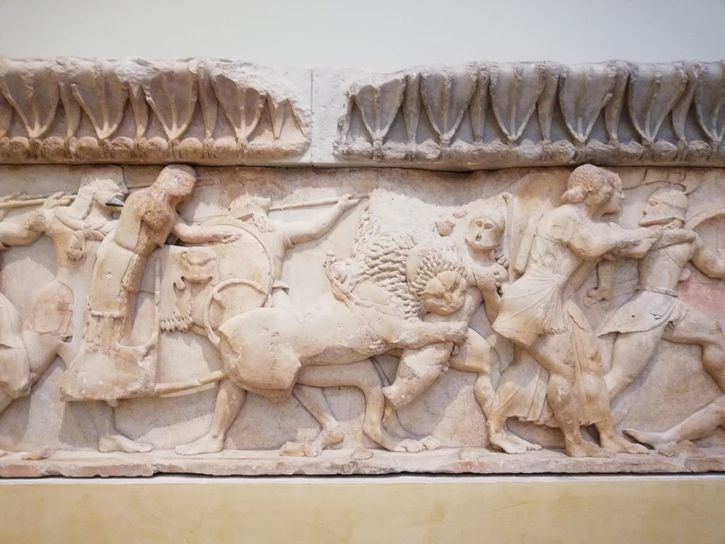
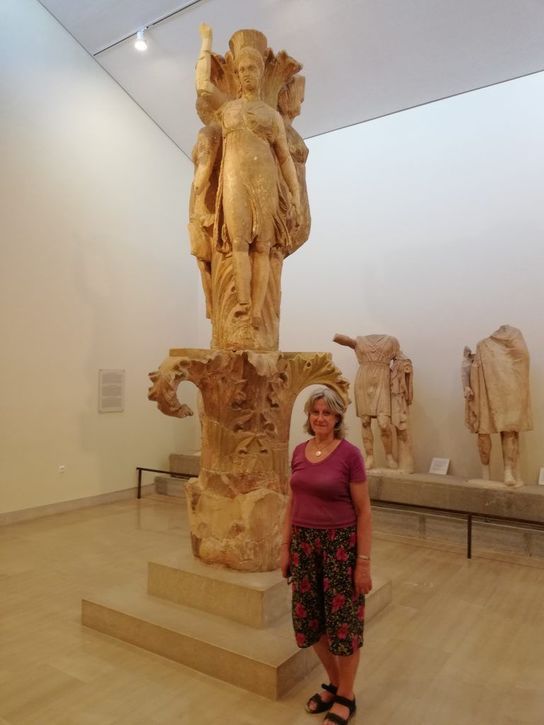
The statue of the charioteer was created to commemorate the victory of the tyrant Polyzalus of Gela in Sicily and his chariot in the Pythian Games of 470 BC, which were held at Delphi in honour of the God Apollo.
